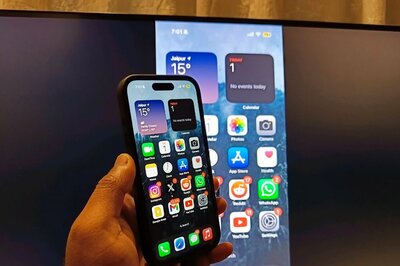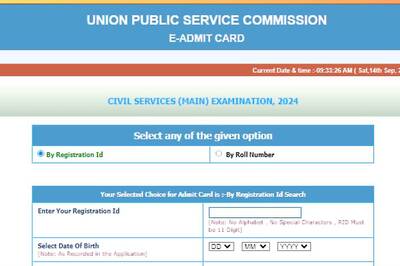
views
What is the invisible string theory?
Invisible string theory is the idea that your soulmate is always present in your life path. It presents a theory that your “person” (which can refer to a platonic or romantic connection) is somehow appearing in or connected to your life long before you’ve met them. The theory posits that the universe keeps you apart until it’s the perfect time for the person (or job, or object, etc.) to enter your life. Many people think of the invisible string as a type of fate or divine timing and that you’re meant to eventually meet up with the person to whom you’re inevitably tied. Invisible string theory can also apply to people that you do already know, but that keep reappearing in your life, like a best friend that wasn’t in your life for a time but came back at just the right moment for you to reconnect. For example, maybe you and your future spouse crossed paths with each other a few times before meeting and forming a deeper connection. Maybe you were aware of these crossing paths (like you ran in the same social circles), or you weren’t aware and only found out years later that you had been in the same spaces and places around the same time. A more realistic (or skeptical) explanation of these occurrences, however, may be that someone you’ll go on to have a deep and meaningful connection with likely shares your values, priorities, and preferences. As a result, it isn’t super surprising that you frequented similar places and sought out similar experiences in the years before you met.
Where did invisible string theory come from?
Invisible string theory largely derives from folkloric and cultural influences. While invisible string theory has recently been having its heyday on TikTok, the concept has been around for a lot longer. Many believe that it derives from the ancient belief in the red thread of fate. In East Asian folklore, this red thread was thought to connect two souls who were destined to be together—not unlike our invisible string. In slightly more modern history, Charlotte Brontë described the connection between her Jane Eyre love interests as a string knotted under one’s left ribs that’s been tightly knotted to a similar string in the other person. In 2020, Taylor Swift released a song called “Invisible String” off her Grammy-winning album Folklore, which many credit for the resurgent popularity of the term on social media. In the song, Swift details all the ways in which she and her current lover were connected over the years, unbeknownst to either of them, which brings her to the refrain “All along there/was some/Invisible string/Tying you to me?” Celine Song’s Oscar-nominated Past Lives (2023) also features the elements of an invisible string, with two childhood friends being pulled back into each other’s lives as adults. The film partly explains this with the Korean concept of in-yeon, which derives from a Buddhist belief in the time-defying and predestined bond between two souls. This popular concept of the “invisible string” may also have its roots in string theory, which is a concept in physics that poses that our universe is made up of tiny vibrating strings that make up all of the things that give us life as we know it (e.g., matter, energy, gravity, etc.).
Real-Life Examples of Invisible String Theory
Thousands of TikTok users have shared their real-life invisible string examples. Many videos have been shared to the platform under the hashtag #invisiblestringtheory, with stories detailing how a significant other, best friend, or beloved object has inexplicably been connected to someone’s entire life story. Here are just a few examples: User @dad.tats shared how he found his childhood jacket from 1994, which he wore growing up in Tennessee. 24 years later, his wife spotted the jacket in a thrift store in Alaska, with his last name written on the tag in his mom’s handwriting. His son now wears the jacket. User @jamirae777 posted a photo of her friends at a concert in 2016, with a young man photobombing in the background. That man turned out to be her future boyfriend. User @shellybohn shared a side-by-side of her and her boyfriend in their childhood photos. Not knowing each other, both of them dressed up for Halloween in homemade washing machine costumes. While they didn’t meet early in life, they had similar experiences.
What are the benefits of applying invisible string theory to your life?
Invisible string theory may bring more hope and guidance to your life. While there’s no “proof” to support this theory or that it happens to everyone, just the act of believing it may be enough to bring some sort of magic to your life. For instance, the more open you are to believing in and accepting supposed gifts and signs from the universe, the more likely you may be to notice them in your everyday life. Choosing to believe in the invisible string theory might make you realize that you’re already having special, magical, and even serendipitous encounters. Even if you don’t really believe in the theory, it can give you hope and a sense of letting go. If you already think you’re connected to the person you’re meant to love, you don’t need to worry about finding them. Rather than constantly fearing that you won’t meet your perfect romantic partner, you can put trust into the universe, relax your mind, and live your life in the most authentic way possible—and that’s a good thing, invisible string or not! Having hope also makes you more likely to put yourself in situations to find “the one,” like initiating a chat with an attractive stranger, revealing your feelings to a friend, or accepting a date invitation you’d usually be too nervous or busy to show up to. However, be sure to maintain your autonomy and critical thinking skills—don’t rely overly on this theory. No theory is perfect, nor is every relationship perfect. Even if you and your partner are bound by an invisible string, you’ll still disagree from time to time, so don’t give up a fulfilling relationship in search of a more ~fairytale~ story.
Expert Advice on Finding Your Soulmate (With Invisible String Theory)
Realize that invisible string theory can’t be forced. If you believe in invisible string theory, you know that it operates under the will of destiny, fate, the universe, or whatever you may want to call the forces that may influence your life path. “Destiny and fate are simply things that are going to happen,” affirms expert astrologer Tara Divina, “they’re going to happen no matter what.” So, in theory, you can’t use manifestation or the law of attraction to bring your soulmate closer more quickly. The string is already in place in your life, and you’re already bound to meet at the right time in both of your lives. That being said, you can still try other tools to generate more love and fulfillment in your life. You can take the time to work on yourself and really focus on what kind of people you want in your life. That way, you’ll be completely ready for your soulmate when they stumble across your path.
Keep a specific picture in your mind of what your soulmate is like. Visualize what you really want in a future partner and keep that picture in mind. Do a morning ritual where you write down a list of things you want out of a significant other as you drink your coffee. Or, meditate with an image of your ideal partner before your next blind date. By putting this kind of karmic energy into the world, the universe may just tug on your invisible string that much quicker. If you’re not sure what you should look for in a romantic partner, start with pro matchmaker Lauren Sanders’ recommendations: “Common traits one should search for when looking for a soulmate include…good communication skills, selflessness, patience, and an overall giving spirit.” “This person will also be genuinely concerned about your well-being,” continues Sanders. “They’ll never leave you hanging and will always be there for you. They don’t mind being inconvenienced to help you…Your soulmate will do anything and everything to make sure you are taken care of, and [they] won’t make you feel bad about it.”
Be open to opportunities for growth and exploration. While you can’t force the invisible string to work faster, you can stay open to and aware of the special messages and people that the universe may be sending your way. Note any coincidences that seem bigger than chance, and roll with any unexpected challenges that come your way. Instead of fighting the universe, take the hard lessons (like bad dates, ghosting situationships, or brutal breakups) as exactly what they are—lessons, ones that will hopefully guide you closer to a better relationship in the future. As psychologist Dr. Sarah Schewitz puts it, “Everyone in our lives is here for a reason—they’re either a blessing or a lesson, and breakups usually offer both. If you’re not over it, you probably haven’t done the work. You haven’t figured out why this happened for you and not to you.” If you can figure out the lessons and blessings that came from a tough situation, you can grow from them and use them to build strong connections in the future, affirms Schewitz.
Prioritize your own needs, standards, and goals—and be realistic. Don’t give up your own passions and standards in pursuit of a relationship based on the invisible string theory. Avoid continuing to date someone you don’t really feel a connection with just because you knew each other as kids or felt an instant spark when you made eye contact across a crowded bar. Instead, focus on identifying your personal values and what’s important to you in a partner. To be totally ready for a relationship, expert love coach Kate Dreyfus recommends establishing a daily routine “of acknowledging, validating, and cultivating higher levels of your self-love, self-acceptance, self-esteem, self-value, and self-worth to create a strong foundation within yourself to create the best relationship to yourself, but also to set yourself up for success with your dating-to-relationship experience in the future.” By doing this practice, you’re meeting your own “need for love through acts of self-love, so you don’t then ‘need’ someone to love you—you only ‘want’ someone to love you,” asserts Dreyfus. “This practice supports you in having healthy romantic and platonic relationships.” Then, if your invisible string soulmate does come into your life at a later date, you’ll be ready for them.
Recognize a healthy relationship when you see one. When you do get into a relationship, you may still be unsure if this person is your invisible string relationship. While believing in the invisible string can deepen your relationship with your partner, don’t lean on this concept so much that you’re constantly looking for something better. Instead, learn the signs of a happy and healthy relationship—if you’re in one, don’t give it up solely based on the invisible string theory. Licensed clinical psychologist Dr. Chloe Carmichael defines a healthy relationship as one where you feel “a sense of trust with the other person. There’s a good track record of mutually respectful behavior, [and] there’s whatever the right level for you is of passion and excitement.” Similarly, Carmichael continues, your relationship is likely healthy if “you and your partner are on the same page regarding goals for the relationship.” If one partner wants to get married or have kids and the other doesn’t, “it’s hard for either person to feel secure and comfortable—to really open up and get vulnerable.”




















Comments
0 comment